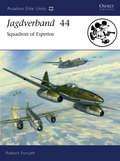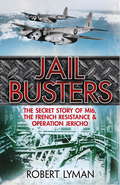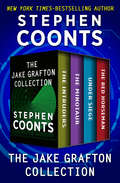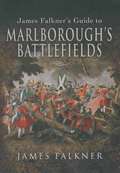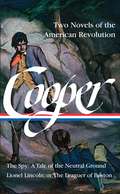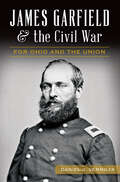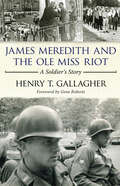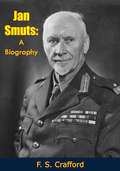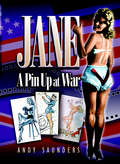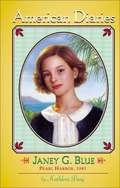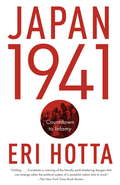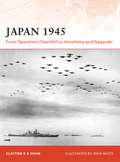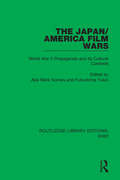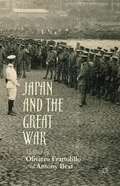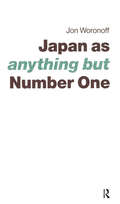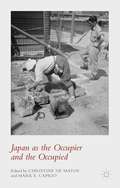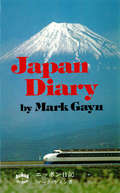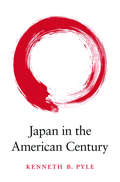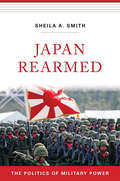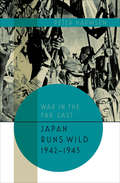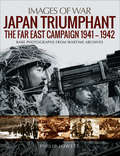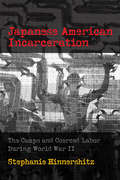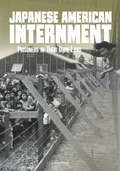- Table View
- List View
Jagdverband 44
by Jim Laurier Robert ForsythJagdverband 44 was formed in February 1945 on Hitler's orders, to fly the Me 262 "Stormbird", the world's first operational jet fighter, and demonstrate its superiority. The unit was led by the legendary Adolf Galland, who recruited some of Germany's leading aces into it, to the extent that it was said that the Knight's Cross was its unofficial badge. JV 44 engaged the US Ninth Army Air Force over Bavaria and, with its significant speed advantage and powerful armament of cannon and rockets, the Me 262 proved a formidable interceptor in the hands of its expert pilots. In its brief operational existence, never able to get more than six jets in the air at any one time, this small unit achieved approximately 50 kills in less than a month. Unfortunately for the German defensive effort (though Galland himself was glad not to have prolonged the war) there were not enough Me 262s to have any overall effect on the Allied air campaign.This book is a dramatic record of a highly individual unit and an exciting early chapter in the history of the jet fighter. Four of the world's ten surviving Me 262s are major attractions at flight museums in the USA and recently constructed replicas will soon be a feature of air shows around the nation and the "experten" aces of the Luftwaffe have an enduring fascination.From the Trade Paperback edition.
The Jaguar Hunter (Gateway Essentials #400)
by Lucius ShepardFourteen stories - including "Radiant Green Star", winner of the 2001 Locus Award for Best Novella - make up this classic collection. Leading off the book is the Nebula Award-winning title story, in which a poor Honduran hunter is coerced into tracking the forbidden "Black Jaguar of Barrio Carolina." Futuristic war, menacing wind spirits, parallel worlds, a six-thousand-foot dragon: this collection proves that Shepard is neither genre fantasist not strict realist, but one of the most intriguing writers we have today.
The Jail Busters: The Secret Story of MI6, the French Resistance and Operation Jericho
by Robert LymanIn the new year of 1944 the French Resistance in northern France was on its knees. Relentless attacks on its diverse and disorganised networks by the Gestapo and the Abwehr had put many of its best operatives in prison, or worse. But in the lead up to Operation Overlord, 'D Day', the Resistance had never been more important to the Allied war effort, and many groups were in the pay of Britain's Secret Intelligence Service, MI6. One such was organised by a patriot called Dominic Ponchardier. For months he had watched helplessly as his friends and colleagues had been swept up by the Nazi drag net, and cast into the old prison on the eastern outskirts of Amiens. In desperation he asked his MI6 handlers for help, and once London agreed it led to one of the most daring missions of the war. On the morning of 18 February 1944, nineteen Mosquito bombers flew at low level across the channel, skimming just above the ground to drop their bombs on sections of the walls of Amiens Prison. Hundreds escaped, scores of whom evaded recapture to continue the fight against Nazi repression. It was an epic of precision bombing, in which one of the most notable RAF heroes of the war, Group Captain Charles Pickard, lost his life. Robert Lyman's book reveals, from previously unseen sources, the full truth of MI6's involvement in the French Resistance, and narrates in vivid detail a stirring tale of courage and skill.
Jake: Amores de Redenção #2 (Amores de Redenção #2)
by Anna ScottJake é o cara mau, de mau humor. Hope é uma garota doce e generosa com um passado que prefere esquecer. Depois que ambos perdem um grande amigo, são jogados juntos de novas maneiras que nunca esperavam. Uma atração fervilhante aparece, mas quando Jake descobre que Hope está em sério perigo, ele não nada irá pará-lo de protegê-la. Ela quer ser forte, ela precisa ser independente. Ele quer proteger, ele precisa que ela precise dele. Como esses dois encontrarão o caminho?
The Jake Grafton Collection: The Intruders, The Minotaur, Under Siege, and The Red Horseman (Jake Grafton)
by Stephen CoontsThe hero of the New York Times–bestselling Flight of the Intruder is back in action—“Stephen Coonts, like Jake Grafton, just keeps getting better” (Tom Clancy). Navy pilot Jake Grafton took the fight to the enemy in the Vietnam War, winning the Congressional Medal of Honor and becoming a legend in the military community. But now he must navigate life both in the cockpit and in the halls of power as he finds himself on the front lines of a new kind of war . . . The Intruders: In this sequel to Flight of the Intruder, Grafton is stationed in the South Pacific on the USS Columbia, where his new mission is to educate an unruly group of Marines in the art of flying from an aircraft carrier. They better be fast learners, because they’ll have to work together to survive against an enemy unlike any they’ve ever faced. “In the realm of today’s military fiction, Mr. Coonts’s The Intruders is as good as they come.” —The Dallas Morning News The Minotaur: Grafton is heading up a top-secret stealth bomber program at the Pentagon when a series of mysterious deaths occurs, leading him on a manhunt within the US government for a Soviet mole code-named the “Minotaur.” If he can’t find the traitor, Grafton could lose far more than just his career . . . “Wildly inventive.” —Ocala Star-Banner Under Siege: In this New York Times bestseller, when a vicious drug lord is captured and brought to Washington, DC, for trial, his fanatically loyal private army prepares to launch an attack on the United States—and its president. The only man who can stop the bloodshed and take down the assassins is Jake Grafton. “Will keep you glued to your seat on a roller-coaster ride of adventure.” —USA Today The Red Horseman: As the USSR falls, newly appointed intelligence chief Jake Grafton knows that even as one threat falls, several more are waiting to get their hands on the former Soviet nuclear arsenal. And as he tries to stop a possible Armageddon, someone who is supposed to be on Grafton’s side is working to make sure he fails. “Quick-firing excitement, plot, and action . . . Coonts at his best.” —The Dallas Morning News
James Falkner's Guide to Marlborough's Battlefields
by James FalknerThree hundred years ago Queen Anne's Captain-General, John Churchill 1st Duke of Marlborough, led the Allied armies in an epic struggle against the powerful French forces of Louis XIV, in campaigns that stretched across wide areas of the Low Countries, France and Germany. Marlborough's victories at the Schellenberg, Blenheim, Ramillies, Oudenarde and Malplaquet are among the most remarkable feats in all of British military history. Marlborough broke France's military power for a hundred years. As James Falkner demonstrates in this, the first full-scale guide to the subject, the story of these famous campaigns makes compelling and exciting reading, and the sites associated with them are evocative places that can easily be visited today. His battlefield guide is essential reading for anyone who is keen to understand the military history of the era, and it is an invaluable companion for visitors to the many battlefields associated with Marlborough's triumphs.
James Fenimore Cooper: The Spy: A Tale of the Neutral Ground / Lionel Lincoln; or, The Leaguer of Boston (Library of America James Fenimore Cooper Edition #4)
by James Fenimore Cooper Alan TaylorThe American Revolution comes to vivid life in two dramatic tales of espionage, intrigue, and romance from the author of The Last of Mohicans.With his second novel, The Spy:A Tale of the Neutral Ground, in 1821, James Cooper (the Fenimore would come later) found his true voice and what became his most enduring subject matter: the history of his young nation, born of the clash between Old World and New. Set largely in Westchester County--site of the real-life intrigues of Benedict Arnold and Major John Andre--The Spy traces the conflicting allegiances of rebels and loyalists, with the supposed loyalist spy Harvey Birch (actually in the service of George Washington) finding himself caught up in conflicts between friendship and duty as he moves between the two sides. Washington himself makes an incognito appearance as the mysterious "Mr. Harper." Cooper continued in the same vein with Lionel Lincoln; Or, The Leaguer of Boston (1825), a carefully researched panorama of the coming of the Revolution, complete with detailed depictions of the battles of Lexington and Concord and Bunker Hill. With the hero a native-born American serving in the British Army, issues of loyalty are again complex, and some American reviewers, not for the last time, found Cooper's politics a bit too ambiguous for comfort.LIBRARY OF AMERICA is an independent nonprofit cultural organization founded in 1979 to preserve our nation’s literary heritage by publishing, and keeping permanently in print, America’s best and most significant writing. The Library of America series includes more than 300 volumes to date, authoritative editions that average 1,000 pages in length, feature cloth covers, sewn bindings, and ribbon markers, and are printed on premium acid-free paper that will last for centuries.
James Garfield & the Civil War: For Ohio and the Union
by Daniel J VermilyaThis biography of America&’s twentieth president sheds light on his Civil War years, when he served as a major general for the Union Army. While his presidency was tragically cut short by his assassination, James Abraham Garfield's eventful life covered some of the most consequential years of American history. When the United States was divided by war, Garfield was one of many who stepped forward to defend the Union. In this biography, historian Daniel J. Vermilya reveals the little-known story of Garfield's role in the Civil War. From humble beginnings in Ohio, Garfield rose to become a major general in the Union army. His military career took him to the backwoods of Kentucky, the fields of Shiloh and Chickamauga, and ultimately to the halls of Congress. His service during the war established Garfield as a courageous leader who would one day lead the country as president.
James Meredith and the Ole Miss Riot: A Soldier's Story
by Henry T. GallagherIn September 1962, James Meredith became the first African American admitted to the University of Mississippi. A milestone in the civil rights movement, his admission triggered a riot spurred by a mob of three thousand whites from across the South and all but officially stoked by the state's segregationist authorities. Historians have called the Oxford riot nothing less than an insurrection and the worst constitutional crisis since the Civil War. The escalating conflict prompted President John F. Kennedy to send twenty thousand regular army troops, in addition to federalized Mississippi National Guard soldiers, into the civil unrest (ten thousand into the town itself) to quell rioters and restore law and order. James Meredith and the Ole Miss Riot is the memoir of one of the participants, a young army second lieutenant named Henry Gallagher, born and raised in Minnesota. His military police battalion from New Jersey deployed, without the benefit of riot-control practice or advance briefing, into a deadly civil rights confrontation. He was thereafter assigned as the officer-in-charge of Meredith's security detail at a time when he faced very real threats to his life. Gallagher's first-person account considers the performance of his fellow soldiers before and after the riot. He writes of the behavior of the white students, some of them defiant, others perceiving a Communist-inspired Kennedy conspiracy in Meredith's entry into Mississippi's “flagship” university. The author depicts the student, Meredith, a man who at times seemed disconnected with the violent reality that swirled around him, and who even aspired to be freed of his protectors so that he could just be another Ole Miss student. James Meredith and the Ole Miss Riot is both an invaluable perspective on a pivotal moment in American history and an in-depth look at a unique home front military action. From the vantage of the fiftieth anniversary of the riot, Henry T. Gallagher reveals the young man he was in the midst of one of history's most profound tests, a soldier from the Midwest encountering the powder keg of the Old South and its violent racial divisions.
Jan Smuts: A Biography
by F. S. Crafford‘A just biography of an important figure—political philosopher, soldier in three wars, scientist, statesman—Jan Smuts, who has played a long and decisive role in the formation and consolidation of South Africa. Masterful, energetic, intolerant, often highhanded, Smuts has never been a popular leader, but never once did he deviate from his conception of a united South Africa within the British Empire. Before his Premiership and after, he was to fight steadily against the opposition, the Nationalists, who demanded complete severance from Britain. Other problems of the Indians, of labor rebellion, of industrial unrest, objectively presented. During the First World War, his ruthless leadership in action in East Africa; his important part in world affairs as representative in the British War Cabinet; and later his plan for the League of Nations. He fell from power in 1924, as the anti-British Hertzog came in; he was recalled at 70 to head his country at war for the third time, which he has accomplished with equal severity and decisiveness.‘Sound, factual biography…’ (Kirkus)
Jane: A Pin-Up at War
by Andy SaundersJane was a wartime phenomenon. A sensation. She was also an important feature in the morale of Britain's fighting forces around the world and to those left behind on the "Home Front". So important, in fact, that her fame extended to the House of Commons where one wartime MP referred to our troops as "Jane's fighting men!" Until now there has been no published study of Jane or the woman who inspired her. This book fills the gap with a publication which will have a wide appeal. In a production combining words, photographs and selective cartoons, an in-depth look is taken at the Jane story and, in particular, the beautiful real life model behind that story, Christabel Leighton-Porter. A wealth of pictorial and photographic material exists to illustrate this highly visual story. Much of it has never before seen the light of day. All of it is of high quality and a considerable quantity falls into the 'glamor' category which will appeal to both male and female readers in what is an interesting study of wartime Britain and of Jane's historical and sociological importance of those times.
Janey G. Blue: Pearl Harbor, 1941 (American Diaries)
by Kathleen DueyPearl Harbor, Hawaii, December, 1941. I just hope the war stays far, far away from us. Janey loves the beautiful trees, delicious fruits, and exotic mix of people on the island of Oahu, where her father has come to work at Hickam Airfield. But she's terribly homesick for her friends back in Kansas -- especially with all the frightening talk about war and rumors of a Japanese invasion of Hawaii. Then, on December 7th, Janey's worst nightmares come true. Japanese bombs and bullets shatter the early morning peace. Fleeing with her mother, brother, and Akiko -- the girl across the street, who barely speaks to her -- Janey is terrified for her father at the airfield. During the long, tense hours of worry and fear, Janey must try to find her courage. Will the war turn everything upside down? Will Janey be scared and lonely forever?
Japan 1941: Countdown to Infamy
by Eri HottaA groundbreaking history that considers the attack on Pearl Harbor from the Japanese perspective and is certain to revolutionize how we think of the war in the Pacific. When Japan launched hostilities against the United States in 1941, argues Eri Hotta, its leaders, in large part, understood they were entering a war they were almost certain to lose. Drawing on material little known to Western readers, and barely explored in depth in Japan itself, Hotta poses an essential question: Why did these men--military men, civilian politicians, diplomats, the emperor--put their country and its citizens so unnecessarily in harm's way? Introducing us to the doubters, schemers, and would-be patriots who led their nation into this conflagration, Hotta brilliantly shows us a Japan rarely glimpsed--eager to avoid war but fraught with tensions with the West, blinded by reckless militarism couched in traditional notions of pride and honor, tempted by the gambler's dream of scoring the biggest win against impossible odds and nearly escaping disaster before it finally proved inevitable.In an intimate account of the increasingly heated debates and doomed diplomatic overtures preceding Pearl Harbor, Hotta reveals just how divided Japan's leaders were, right up to (and, in fact, beyond) their eleventh-hour decision to attack. We see a ruling cadre rich in regional ambition and hubris: many of the same leaders seeking to avoid war with the United States continued to adamantly advocate Asian expansionism, hoping to advance, or at least maintain, the occupation of China that began in 1931, unable to end the second Sino-Japanese War and unwilling to acknowledge Washington's hardening disapproval of their continental incursions. Even as Japanese diplomats continued to negotiate with the Roosevelt administration, Matsuoka Yosuke, the egomaniacal foreign minister who relished paying court to both Stalin and Hitler, and his facile supporters cemented Japan's place in the fascist alliance with Germany and Italy--unaware (or unconcerned) that in so doing they destroyed the nation's bona fides with the West. We see a dysfunctional political system in which military leaders reported to both the civilian government and the emperor, creating a structure that facilitated intrigues and stoked a jingoistic rivalry between Japan's army and navy. Roles are recast and blame reexamined as Hotta analyzes the actions and motivations of the hawks and skeptics among Japan's elite. Emperor Hirohito and General Hideki Tojo are newly appraised as we discover how the two men fumbled for a way to avoid war before finally acceding to it. Hotta peels back seventy years of historical mythologizing--both Japanese and Western--to expose all-too-human Japanese leaders torn by doubt in the months preceding the attack, more concerned with saving face than saving lives, finally drawn into war as much by incompetence and lack of political will as by bellicosity. An essential book for any student of the Second World War, this compelling reassessment will forever change the way we remember those days of infamy.
Japan 1945
by John White Clayton ChunIn this 200th Campaign series title Clayton Chun examines the final stages of World War II (1939-1945) as the Allies debated how to bring about the surrender of Japan. Chun not only describes the actual events but also analyzes the possible operations to capture the Japanese mainland which were never implemented. He details Operation Downfall (the planned invasion of the Japanese home islands) and its two-phased approach. Firstly Operation Olympic would see the invasion of Kyushu, followed by Operation Coronet which would see the invasion of the area around Tokyo.Chun goes on to examine exactly why these plans were never implemented, including Allied fears that both military and civilian casualties would be terrible and would result in a long, drawn out war of attrition. He then goes on to examine the horrific alternative to military invasion - the attacks on Hiroshima and Nagasaki with nuclear weapons - which made the Allied threat of "prompt and utter destruction" a reality. With a series of illustrations, including detailed diagrams of the atomic bombs, a depiction of the different stages of the explosions and maps of the original invasion plans, this book provides a unique perspective of a key event in world history.
The Japan/America Film Wars: World War II Propaganda and its Cultural Contexts (Routledge Library Editions: WW2 #15)
by Abé Mark Nornes and Fukushima YukioWith contributions from noted critics and film historians from both countries, this book, first published in 1994, examines some of the most innovative and disturbing propaganda ever created. It analyses the conflicting images of these films and their effectiveness in defining public perception of the enemy. It also offers pointed commentary on the power of visual imagery to enhance racial tensions and enforce both positive and negative stereotypes of the Other.
Japan and the Great War
by Antony Best Oliviero FrattolilloIn this book, seven internationally renowned experts on Japanese and Asian history have come together to investigate, with innovative methodological approaches, various aspects of the Japanese experience during and after the First World War.
Japan as (Anything but) Number One
by WoronoffA full scale examination of the 1979 Sino-Vietnamese War - the events that led to it, the Cold War aftermath, and the implications for the region and beyond.
Japan as the Occupier and the Occupied
by Christine De Matos Mark E. CaprioThe moment of Japan's defeat in 1945 artificially dissects its history. Not long after the Meiji Restoration, Japan acquired Ezo (present-day Hokkaido) and the Ryukyu Islands (present-day Okinawa). Later in the Meiji Period it annexed Taiwan, southern Sakhalin, and the Korean peninsula. Before the Asia-Pacific War ended in 1945, Japan controlled territories in China, Manchuria, Southeast Asia and the Pacific but with its acceptance of the Potsdam Declaration in August 1945, Japan lost mostof these acquisitions. Examining issues and experiences as part of either a prewar/wartime or postwar context impedes our ability to understand the influence that one period had on the other. How do occupiers maintain their position of power and influence over the people of the state it occupies? How did Japan's leadership and people manage the transition from that of occupier of other territories to that of being occupied by foreign powers? How did this transition affect different aspects of society, from the civilian to the military, the political to the bureaucratic? How did Japanese occupation affect those it had power over, from dissenters to collaborators? What long term impacts did military occupation have on the occupied in terms of memory, commemoration and repatriation? Japan as the Occupier and the Occupied investigates these types of questions by examining transwar transitions in Japan proper and the various territories that it controlled, including Korea, Borneo, Singapore, Manchuria and China. Through taking this approach, a more nuanced understanding of Japan's role as occupier and occupied emerges. More generally, the book contributes to scholarship on the power dynamics of military occupation and the complexities that emerge during, and in the aftermath of, imperial and military expansion, control, and retreat.
Japan Diary
by Mark GaynThis book is an eyewitness report of what happened in Japan and Korea during the Occupation years from December 1945 to May 1948.It is also meant to be some other things.<P><P> It is the story of that extraordinary figure General Douglas MacArthur, and the men around him. It is the story of the way American foreign polity operated in one segment of the globe and of the plot and counterplot that went on behind the Japanese throne in the years of war and of the subsequent conspiracy to thwart the Allied purposes. It is the story of the common people in two Oriental lands. It is, finally, the record of the author's education, and not a few readers will find it controversial. But it is an absorbing book nonetheless, and the years that have passed since its first publication have not diminished its value as the chronicle of a highly observant reporter.It is indeed an intriguing panorama that Gayn presents, and whether the reader agrees with him in all of his observations, he can hardly accuse him of being unexciting.
Japan in the American Century
by Kenneth B. PyleNo nation was more deeply affected by America’s rise to power than Japan. The price paid to end the most intrusive reconstruction of a nation in modern history was a cold war alliance with the U.S. that ensured American dominance in the region. Kenneth Pyle offers a thoughtful history of this relationship at a time when the alliance is changing.
Japan Rearmed: The Politics of Military Power
by Sheila A. SmithModern Japan is not only responding to threats from North Korea and China but is also reevaluating its dependence on the United States, Sheila Smith shows. No longer convinced they can rely on Americans to defend their country, Tokyo’s political leaders are now confronting the possibility that they may need to prepare the nation’s military for war.
Japan Runs Wild, 1942–1943 (War in the Far East #2)
by Peter HarmsenThe author of Storm Clouds Over the Pacific, 1931–1941 chronicles Japan&’s dramatic reversal of fortune as Allied forces gained advantage during WWII. In early 1942, the Imperial Japanese Army and Navy were advancing on all fronts, humiliating Allied forces throughout the Pacific. In a matter of months, Japan had conquered an area larger than Hitler&’s empire at its apex. Hawaiians and Australians feared a future under Hirohito. The fate of half of mankind was hanging in the balance. But by the end of 1943, the tables had turned entirely. The American-led military machine had kicked into gear, and the Japanese were fighting a defensive battle along a frontline that crossed thousands of miles of land and sea. In Japan Runs Wild, 1942–1943, historian Peter Harmsen details the astonishing transformation that took place in that period, setting the Allies on a path to ultimate victory over Japan. The second installment of Peter Harmsen&’s three-part history, Japan Runs Wild, 1942–1943 continues his comprehensive chronicle of the Pacific Theater during the Second World War. Giving due emphasis to the Japanese-American struggle, Harmsen also sheds light on the other peoples involved, including the British, Australians, Soviets, Filipinos, Indians, and Koreans. Above all, the central importance of China is highlighted in a way that no previous general history of the war against Japan has achieved.
Japan Triumphant: The Far East Campaign 1941-1942 (Images of War)
by Philip JowettImperial Japan&’s ambitious offensive at the beginning of WWII is captured in dramatic detail in this pictorial history featuring rare wartime photographs. The Japanese offensive in the Far East in 1941-1942 was extraordinary in its ambition, for their aim was to advance across the entire region. They clashed with an array of forces in a series of lightning campaigns that included famous episodes like the raid on Pearl Harbor and the conquest of Singapore. In this vivid photographic history, historian Philip Jowett covers the whole course of the offensive, portraying not only the Japanese military which achieved such incredible success but the armies they overwhelmed. In a sequence of over 200 wartime photographs—many of which have never been published before—Jowett covers the land, sea, and air fighting as the Japanese occupied so much of the region. Rare images of the Japanese forces as they prepared for war and then made seemingly unstoppable progress are matched with images of the armies they surprised and vanquished. Japan Triumphant captures the character of the war in the Far East, showing the appearance, equipment, and weaponry of the armies involved as well as the conditions in which they fought.
Japanese American Incarceration: The Camps and Coerced Labor during World War II (Politics and Culture in Modern America)
by Stephanie D. HinnershitzBetween 1942 and 1945, the U.S. government wrongfully imprisoned thousands of Japanese American citizens and profited from their labor. Japanese American Incarceration recasts the forced removal and incarceration of approximately 120,000 Japanese Americans during World War II as a history of prison labor and exploitation.Following Franklin Roosevelt's 1942 Executive Order 9066, which called for the exclusion of potentially dangerous groups from military zones along the West Coast, the federal government placed Japanese Americans in makeshift prisons throughout the country. In addition to working on day-to-day operations of the camps, Japanese Americans were coerced into harvesting crops, digging irrigation ditches, paving roads, and building barracks for little to no compensation and often at the behest of privately run businesses—all in the name of national security.How did the U.S. government use incarceration to address labor demands during World War II, and how did imprisoned Japanese Americans respond to the stripping of not only their civil rights, but their labor rights as well? Using a variety of archives and collected oral histories, Japanese American Incarceration uncovers the startling answers to these questions. Stephanie D. Hinnershitz's timely study connects the government's exploitation of imprisoned Japanese Americans to the history of prison labor in the United States.
Japanese American Internment: Prisoners in Their Own Land (Tangled History)
by Steven OtfinoskiVivid storytelling brings World War II history to life and place readers in the shoes of the people who experienced the United States' Japanese internment camps. On the heels of Japan's surprise attack on Pearl Harbor in December 1941, President Franklin D. Roosevelt issued Executive Order 9066. Through this order, more than 110,000 people of Japanese descent, many of them U.S. citizens, were forced to relocate to military camps for the duration of the war. Suspenseful, dramatic events unfold in chronological, interwoven stories from the different perspectives of people who experienced these events while they were happening. Narratives intertwine to create a breathless, "What's Next?" kind of read. Students gain a new perspective on historical figures as they learn about real people struggling to decide how best to act in a given moment.
